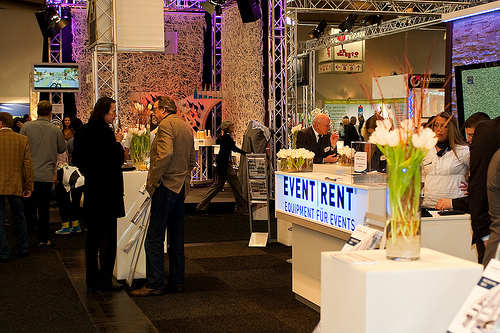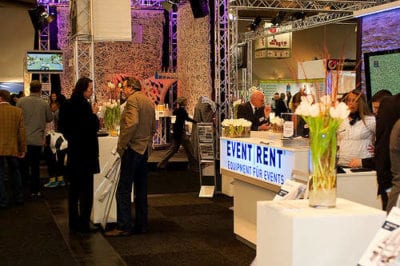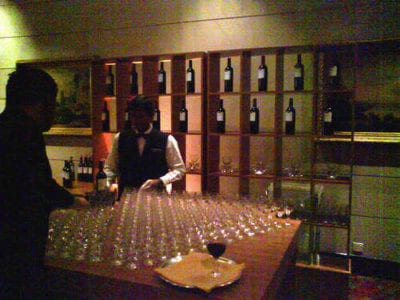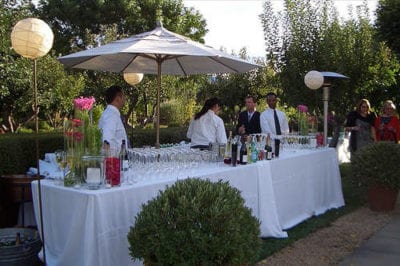

In this age of networking, meeting new people during events may lead to new friendship or successful business deals.
What makes most people consider an event successful? I think for most people, it isn’t the food or the decor (though of course these are likewise important), but the people.
Did they meet someone new that could make a big impact on their life or business?
That’s something that will lodge an event in their mind and make them want to come back (and do business with you again!).
The trouble is that though everyone appreciates the benefits of meeting and connecting with new people, for many, mingling and meeting new strangers isn’t natural at all.
Though this may seem totally out of your control, I’ve seen a lot of clever planners and caterers set-up the venue to make connecting with others a lot easier.
The bar, being a sociable, easy place to connect and mix it up with others can be a valuable tool for you. If your barios well-located and there is space to meet and greet without creating a logjam, the bar area is where guests will be mingling the most.
A purpose-built bar is set in the most convenient location, as decided by the architect, to promote guest-flow. But if you’re able to set-up a portable bar, how can you help people bump into one another and connect?
Make the Bar Easy to See
Guests entering the event should have an immediate focal point and destination. The bar is where socializing starts, where guests can meet acquaintances or give them something to do while they get their bearings without feeling awkward.
Most people entering at the top of a long room, for example, look to the right, then along to the end of the room, then to the left. By setting the bar on the right, it will immediately catch guests attention.
Draw Guests In
The bar shouldn’t be too close to the door, or you have an immediate bottle-neck situation. Ideally it should be at least one third of the room away, to draw guests in, but not make them walk the length of the room.

Using A Bar with LED Lighting and Printed Graphic Panels can help attract attention and make the bar a focal point and facilitate socializing
One clever way that I’ve seen used to draw guests towards the bar is to offer freshly-made appetizers at regular intervals. This can even be effective when there will be a long buffet queue, as it ‘entertains’ those waiting hungrily for the queue to clear.
Appetizers are also effective when the drinks are expensive and guests aren’t coming up often since they will ensure they linger more when they do. The bar is a great focal point at any sociable event. Make it easy to find, neither too deserted nor too crowded, pleasant to be near, and your guests will seize the chance to mingle.
Avoid congestion!
Guests once served should have room to move a few paces away, while talking or looking round, so that others can get to the bar, but they shouldn’t have to move right out of the way. Someone entering the room should see a pleasant gathering of people, not a tightly-packed crowd jostling in a small space.
If buffet food is being served in the same venue, make sure the queue for the buffet won’t ever get mixed up with the gathering round the bar. You also don’t want the crowd around the bar constantly nudging, bumping or falling backwards over guests seated at tables.
Temporary or portable bars tend to be smaller, so guests must be able to get their drink and move straight to a sociable area to talk. Don’t supply lots of lounge chairs in the area – anyone who does sit will be eye-level with a sea of legs. One solution is to have cocktail tables nearby to draw guests from the main service area, with chairs and couches further away.
Set the Right Tone (and Volume)
Music at the bar should be pitched so that guests can ask for a drink without having to repeat themselves or shout. If there are speakers all round the room, the volume at the bar should be lower. If the bar is the only source of music, to draw people across, angle the speakers away from the service area around the bar itself.
At least for me personally, nothing is more frustrating than being at an event where I’m looking forward to meeting and talking with someone only to spend the whole time screaming and straining to hear.
Using More Than One Bar
Some events lend themselves to having additional or temporary bar points as features. For large events at large venues, bar service is typically determined on a per square foot basis and it’s not unusual to have up to a dozen bars in one large ballroom.
The placing of these additional ones depends on their purpose. If the additional bars are offering the same drinks as the main one, i.e. there to help cope with the rush, alternate setting them up on the left and right side – again, at least a third of the way into the room, to draw guests in without causing a bottle neck.
If there’s a specialty cocktail bar, or a champagne bar during the wedding photographs for example, it could be confusing to have it visible before it’s not in use. Using a screen, or wheeling in a portable bar, let’s you wheel it out when appropriate.



